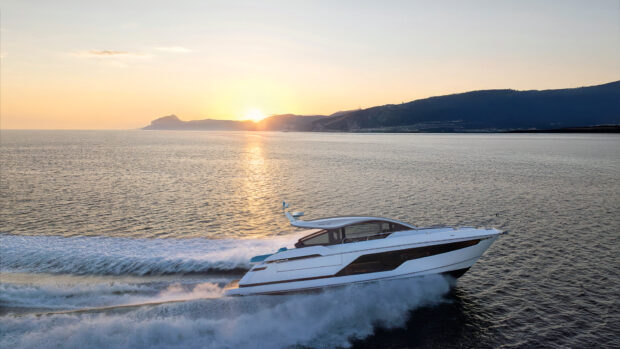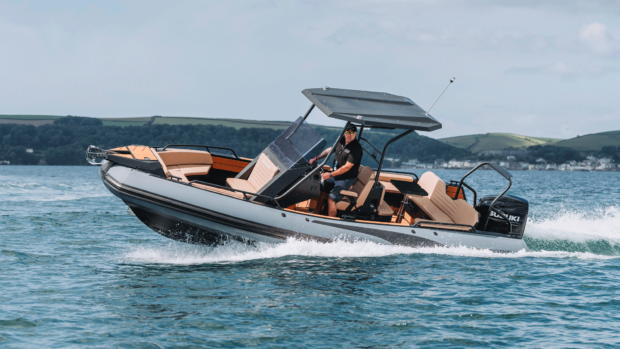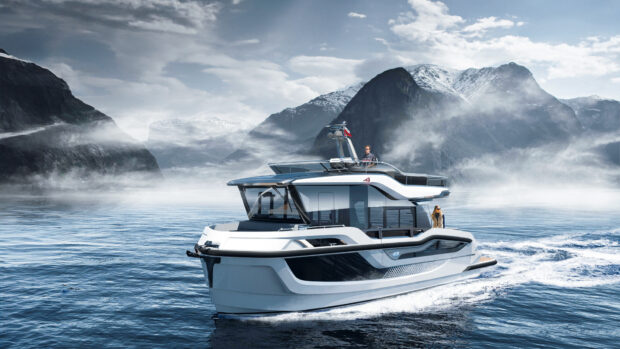A German U-boat – said by her captain to have been attacked and mauled by a Nessie-type sea monster – has been found by engineers laying cables on the Irish Sea floor off Scotland
A German U-boat – reportedly attacked and mauled by a Nessie-type sea monster – has been found by engineers laying cables on the Irish Sea floor off Scotland.
The WWI boat is revealed looking intact in remarkable sonar images recorded by a team putting down a £1billion power line from Ayrshire to The Wirral supplying renewable energy to England and Wales.
Seafaring folklore claims that the boat, believed to be UB-85, was abandoned by her crew after a fight with ‘a giant sea monster with large eyes, set in a horny sort of skull… with teeth that could be seen glistening in the moonlight,” according to its captain when interviewed aboard patrol boat HMS Coreopsis.
Captain Krech also claimed that his sub was so damaged fighting the monster that it could no longer dive.

Features of this particular wreck confirm it as a UBIII-Class submarine
Official reports from the time tell how UB-85 was caught on the surface during daylight on April 30, 1918 and sunk by the British patrol boat, which was built on the Clyde near Glasgow by Barclay Curle & Co, of Elderslie Dockyard.
The German submarine crew surrendered without resistance, much to the surprise of their British counterparts.
Captain Krech, when questioned about why he’d been cruising on the surface, claimed the sub had been recharging batteries at night when a ‘strange beast’ rose from the sea.
The animal was so enormous that it forced the U-boat to list greatly to starboard. “Every man on watch began firing a sidearm at the beast,” Krech is believed to have said, telling how the battle continued until the animal dropped back into the sea.
In the struggle, though, the forward deck plating was damaged and the sub could no longer submerge.
“That’s why you were able to catch us on the surface,” Krech concluded.

HMS Coreopsis is officially recorded as sinking the U-boat
Sadly, the sonar images do not show any of the beast’s teethmarks or clawings and it’s officially recorded that the British vessel sank it.
Nautical archaeologist Dr Innes McCartney is sceptical about the ‘monster battle’ explanation for the abandonment.
“I don’t think it was a sea monster,” said Dr McCartney. “I like the idea of Nessie doing her bit for the war effort but in reality the real sea monster was the U-boat.”
Shredded nerves caused by the secrecy surrounding U-boats and their capabilities threw up many conspiracy theories, monsters and hauntings among them. Culprits among those spreading such stories were old seafarers and reporters, in late-night discussions after very enjoyable evenings, he said.
Dr McCartney said there were at least a dozen British and German submarines known to have sunk in the Irish Sea.
“The features of this particular wreck confirm it as a UBIII-Class submarine, two of which were lost in the area – the more famous UB-85 and its sister boat UB-82.
“While I can conclude that this wreck is likely to be one or the other, they would be practically impossible to tell apart, aside from the numbers painted on them in service, now obviously long gone.
“Unless a diver can find a shipyard stamp, we cannot say definitively, but yes, we’re certainly closer to solving the so-called mystery of UB-85 and the reason behind its sinking – whether common mechanical failure or something that is less easily explained,” he said.

Western Link subsea cable installation vessels off the Ayrshire Coast
Engineers found the 45m wreck off the Stranraer coast. It has debris spilling from the stern.
Gary Campbell, keeper of the Official Sightings Register of the Loch Ness Monster, said it was ‘entirely feasible’ that a large sea creature disabled the submarine.
“The World War One report from the captain of the British ship HMS Hilary a year earlier makes it clear that seafarers at that time were well aware of large sea ‘monsters’ that could be harmful to their ships,” he said.
“The area the attack took place has a history of sea monster sightings – from the north coast of Wales to Liverpool. What the German captain said could well be true.
“It’s great to see how Nessie’s saltwater cousin clearly got involved in helping with the war effort – she even managed to do the damage without anyone being killed,” he said.
“‘A sea monster attacked my submarine’ is maybe one of the most fanciful excuses of all time,” said ScottishPower’s Peter Roper. “Thankfully we’ve had no monster-related health and safety incidents on the project yet.”
ScottishPower Transmission and the National Grid are working together on the Western Link project to lay the 385km-long undersea cable.

Confession: Why motorboats and moored submarines don’t mix
In this month’s Confession, we hear how one misheard instruction spelled trouble for this sailor in a motoboat

Want to buy a submarine?
One of the last Oberon class submarines to be built is being advertised for sale on eBay

Strange sub on show in Falmouth
Home-made beauty promotes new exhibition









